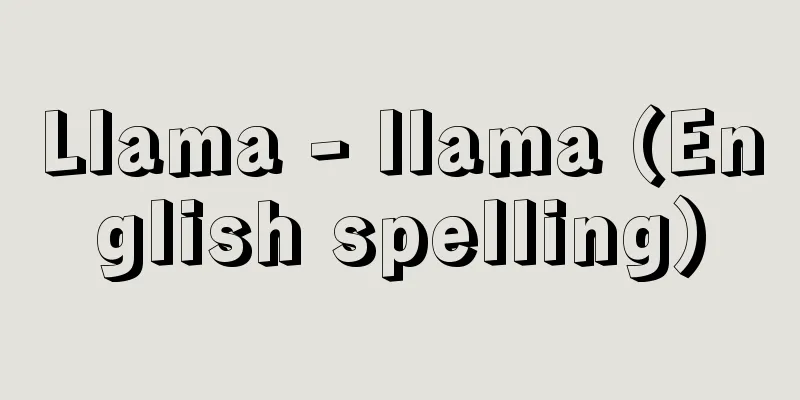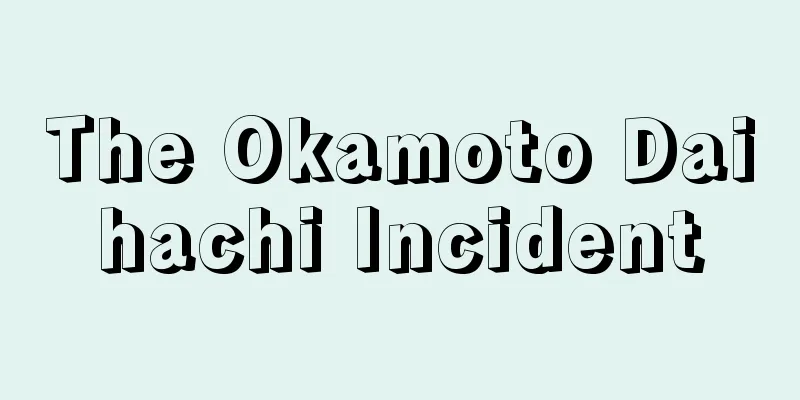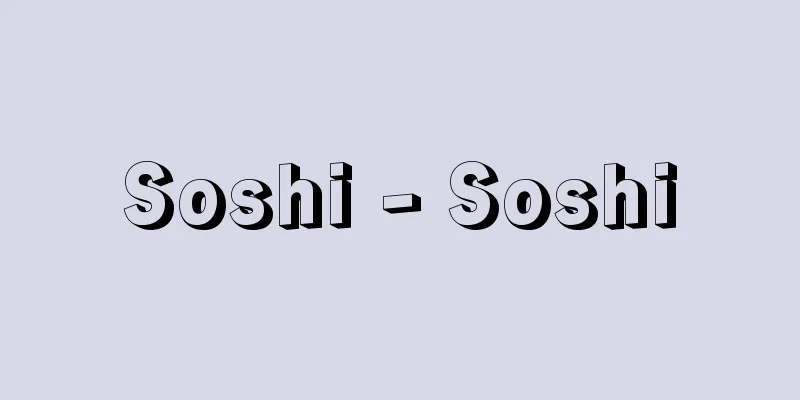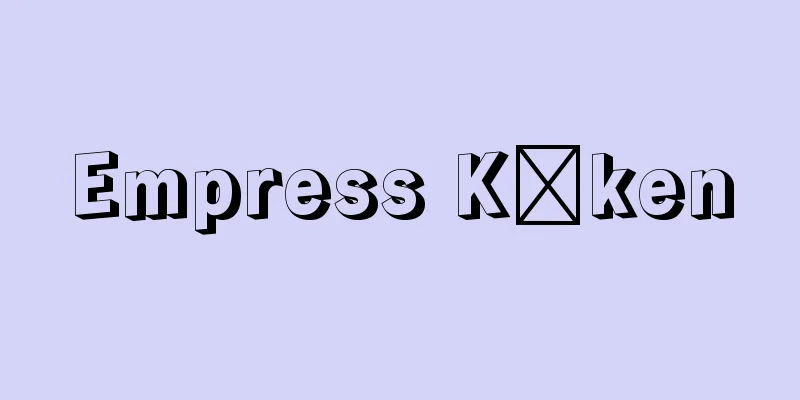Shorthand - Sokki

|
The task of recording speeches or conversations using special symbols, then rewriting them into normal characters. The system of special symbols is called stenography. Depending on the situation, it can be broadly divided into record stenography and dictation stenography. Record stenography is the original form of stenography, in which a speaker speaks directly to a stenographer, and the speaker is recorded by listening to the speaker speak to someone other than the stenographer. Dictation stenography is the recording of a speaker speaking directly to a stenographer, and includes telephone correspondence, interviews in the form of conversations, writing assistance, and writing correspondence. The symbols used by stenographers can be used as speed characters instead of normal characters, and can increase writing efficiency. Once you become proficient at it, it can be used effectively in everyday writing, such as in notebooks and memos, and is extremely convenient for writing drafts, as you can write down your thoughts as they flow. Since ordinary characters cannot keep up with the speed of speech, the use of simple symbols has been practiced since ancient Greek times. Modern shorthand began with the Bright system (invented by Timothy Bright) in the late 16th century, followed by the easy-to-remember Pitman system (invented by Isaac Pitman) in 1837, which became widely used. In America, the Gregg system (invented by John Robert Gregg) invented in 1888 is still widely used today. In addition to this method of writing lines (line-writing shorthand), there is also a method that uses a machine like a typewriter (printed shorthand). The stenotype (invented by Ward Stone Ireland), which is popular in America, began in 1911. Japan's shorthand began on October 28, 1882 (Meiji 15), when Tagusari Koki (1854-1938) adapted the Pitman system and held a seminar in Tokyo. Japan's first shorthand writer, Wakabayashi Kanzo, and others came out of this Tagusari-style seminar and started practicing, so October 28 is now celebrated as the day of the announcement of shorthand. After that, the shorthand system was improved, and the Kumazaki system (created by Kumazaki Kenichiro) was announced in 1906 (Meiji 39), the Nakane system (created by Nakane Masachika) in 1914 (Taisho 3), and the Waseda system (created by Kawaguchi Wataru) in 1930 (Showa 5) were announced one after another, and each system became popular. Furthermore, the stenographer training institutes for both the House of Representatives and the House of Councillors, which opened in 1918 (Taisho 7), started out using the Tasukuri-style stenographer system, but this was gradually improved to become the current House of Councillors and House of Representatives system. As for the printout stenographer system, there is the Sokutype (invented by Kawakami Akira), which was patented in 1944 (Showa 19) and was adopted by the Supreme Court Clerk Training Institute, and is now used mainly by court stenographers. The House of Representatives Stenographer Training Institute and the House of Councillors Stenographer Training Institute aimed to train stenographers for each institution, but they were closed in 2006 (Heisei 18). Currently, there are schools such as the Nakane system and the Waseda system for those who want to become professional stenographers, and self-study books are published and correspondence courses are also available. The basis for learning shorthand is the basic characters that make up the Japanese syllabary, but there are also other ways of expressing yo-on characters, voiced consonants, long consonants, n, tsu, etc. There are also ways of expressing two-syllable characters with i, ku, tsu, ru, etc., particles, and auxiliary verbs, and other commonly used words are in simplified abbreviated form. It takes two or three months to memorize all of these, but it is normal to pass the 5th grade of the certification exam about six months after starting to study. After that, it takes about six months to pass the 3rd grade, so anyone can progress. If things go well, it takes another year or so to pass the 1st grade, but to become a professional shorthand writer, it is necessary to gain practical training at the respective workplace or shorthand office. In particular, in the case of Japanese, there are more homonyms than in other languages, so the job of shorthand, which involves listening to spoken words correctly and accurately rewriting them into normal characters, is considered to be particularly difficult. [Yoshiaki Takebe] ©Shogakukan "> Basic characters of Japanese shorthand Source: Shogakukan Encyclopedia Nipponica About Encyclopedia Nipponica Information | Legend |
|
演説や談話として話されることばを特別の記号で記録し、のちにそれを普通文字に書き直す仕事。その特別の記号の体系を速記方式という。どのような立場で用いるかにより、記録速記と口述速記に大別される。記録速記は、国会、地方議会、裁判、会議、あるいは講演、演説、説教、対談、座談会などで速記録を作成するもので、話し手が速記者以外の人に向かって話すのを傍聴して記録する、速記本来の形である。また、話し手が直接速記者に向かって話すのを速記するのが口述速記で、電話通信による受稿、談話の形による取材、著述の補佐、往復文書の作成などがこれに含まれる。速記者の用いる速記方式の記号は、普通文字にかわるスピード文字ともなり、筆記能率をあげることができる。これに習熟すれば、ノートやメモなど広く日常の文字生活に用いても効果があり、執筆の際の草稿作成なども考えのほとばしるままに書き留めることができ、きわめて好都合である。 普通文字では話す速度に追い付けないため、簡単な記号を用いることは、古くギリシア時代から行われていた。近代速記方式は16世紀末の英語速記方式ブライト式(Timothy Bright創案)に始まり、やがて1837年に、覚えやすいピットマン式(Isaac Pitman創案)が発表されて、大いに普及した。アメリカでは1888年に創案されたグレッグ式(John Robert Gregg創案)が現在も広く行われている。なお、このような線を書く方式(記線速記方式)のほかに、タイプライターのような機械を用いる方式(印字速記方式)がある。アメリカで普及しているステノタイプ(Ward Stone Ireland創案)がそれで、1911年に始まる。 日本の速記は、1882年(明治15)10月28日に田鎖綱紀(たぐさりこうき)(1854―1938)がピットマン系の方式を翻案して東京で講習会を開いたのに始まる。この田鎖式の講習会から、日本最初の速記者若林玵蔵(かんぞう)らが出て実務を行ったため、10月28日を速記発表記念日として祝うことになった。その後、速記方式としても改良が進められ、1906年(明治39)には熊崎(くまざき)式(熊崎健一郎(けんいちろう)創案)、1914年(大正3)には中根(なかね)式(中根正親(まさちか)創案)、1930年(昭和5)には早稲田(わせだ)式(川口渉(わたる)創案)などが次々と発表され、それぞれが普及した。また、1918年(大正7)に開設された貴衆両院の各速記者養成機関(後の参議院速記者養成所、衆議院速記者養成所)は、それぞれ田鎖系の速記方式を用いて出発したが、しだいに改良されて、現在の参議院式、衆議院式に至っている。なお印字速記方式としては、1944年(昭和19)に特許を受けたソクタイプ(川上晃(あきら)創案)があり、最高裁判所書記官研修所に採用され、主として裁判所速記官の用いるところとなっている。衆議院速記者養成所、参議院速記者養成所は、各機関の速記者養成を目標としたものであったが、2006年(平成18)に閉所された。現在職業速記者となるためには、中根式や早稲田式等の学校があり、また独習書が発行されたり、通信講義も行われている。 速記の学習にあたって基本となるのは五十音表を構成する基本文字であるが、ほかに拗音(ようおん)文字や濁音、長音、ン、ッ、などの表し方がある。また、イ、ク、ツ、ルなどのつく二音文字や助詞、助動詞の表し方もあり、そのほかよく用いられる語は簡略な略字の形となっている。これらをひととおり覚えるのに2、3か月はかかるが、学習を始めて6か月ぐらいで検定試験の5級に合格するのが普通である。そのあと3級合格までは6か月ほどで、だれでも進むことができる。順調にいけばさらに1年ほどで1級に合格することができるが、職業速記者となるためには、それぞれの職場や速記事務所で実習を積むことが必要である。とくに日本語の場合、他の言語に比べて同音異義語が多いために、話されることばを正しく聴き取ってそれを正確に普通文字に書き直すという速記の仕事は、とりわけむずかしいとされている。 [武部良明] ©Shogakukan"> 邦文速記の基本文字 出典 小学館 日本大百科全書(ニッポニカ)日本大百科全書(ニッポニカ)について 情報 | 凡例 |
<<: Shorthand book - Seokkibon
Recommend
Cemal Paşa (English spelling) Cemal Pasa
…In 1808, young officers led by Niyazi (1873-1912...
Aloe perryi (English spelling) Aloeperryi
…[Hiroshi Yuasa] [Aya Nitta]. … *Some of the term...
Dryades
...She is said to be the mother of the Charites, ...
Okawachi
A place name in Iitaka District, Ise Province, whi...
Podocarpaceae
…Of these, the species that is distributed the fu...
Youtai - Youtai
〘Noun〙 A type of Chinese poetry. In tandem poetry,...
MHC
major histocompatibility complex, major histocompa...
Tinamidae
… any bird of the order Tinamidae, family Tinamid...
Sagami Province (Sagami Province) - Sagami no Kuni
Former name of province. Sagami. Current name of K...
synaptic gap
…Mammalian synapses are usually chemical synapses...
Toyota Motor Corporation - Toyota Motor Corporation
The world's top automobile manufacturer and Ja...
Umewakamaru - Umewakamaru
The name of a tragic boy who appears in Noh plays...
Chinampa cultivation - Chinampa cultivation
In the Nahuatl language of Mexico, chinampa refers...
Cyanolyca nana (English spelling) Cyanolycanana
…All species have white, green, blue, or purple p...
Carbenium ion
Although it is sometimes used in the same sense a...









